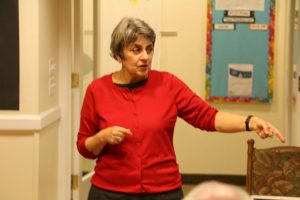 Coming to Terms with Your Hearing Loss? How to Achieve Your Best Hearing Experience.
Coming to Terms with Your Hearing Loss? How to Achieve Your Best Hearing Experience.
Pat Dobbs is a Hearing Loss Consultant and Advocate on a mission. Currently in her second year of Gallaudet University’s Peer Mentoring Program, she maintains a website, Hearing Loss Revolution, that offers stories of hope, information about technology and communication strategies, and tips for healthy adaptation to hearing difficulties.
Recently, Pat successfully completed a local pilot of her new workshop. She’ll offer a free on-line version of the workshop, and the format will be a Live Group Chat, i.e., WRITTEN TEXT ONLY (and, therefore, accessible). Participants will need a computer, wi-fi access and a little computer knowledge.
Participants will be asked to offer feedback on the workshop upon its completion.
Tuesday evenings 7:30 to 9:00 EST:
- March 28
- April 4
- April 11
- April 18
If you’re interested in participating, please contact Pat at pat@coachdobbs.com.
from HearingLossEvolution: [2020: Previously the website was www.hearinglossrevolution.com]
“I’ve had a hearing loss since I was 20. Through the years my hearing declined so much that in 2010 I received a cochlear implant. Today I hear in the average range, ‘Yahoo!’
“Through the years I was embarrassed about my hearing loss, and I seldom told people about it. If I didn’t hear what someone said, I was much more likely to “fake it” than ask them to speak to me in such a way that I could hear them. Consequently, speaking to people became difficult and painful. I dropped out of more and more social situations, became isolated, and depressed.
“But at one point, I stopped and asked myself, “Why don’t I just tell people I have a hearing loss and let them know how they can talk to me so I could hear them better?” After all, people talk to me so that I hear them, not so that I give the right facial expressions.
“I realized that I needed to change my thinking and be clear that there is nothing to be embarrassed about. Out of these thoughts came the Hearing Loss Revolution and the Nine Guiding Principles.”
Learn more about Pat Dobbs‘ hearing loss journey on the Hearing Loss Revolution website.
[NOTE: September, 2020 – Hearing Loss Revolution has changed its domain name to
www.hearinglossevolution.com]
.
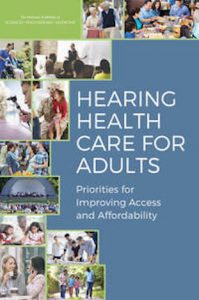 In this article in the March/April 2017 issue of Hearing Loss Magazine, editor Dave Hutchinson offers a compelling description of the impact of the NAS study on the affordability and accessibility of hearing healthcare in the United States.
In this article in the March/April 2017 issue of Hearing Loss Magazine, editor Dave Hutchinson offers a compelling description of the impact of the NAS study on the affordability and accessibility of hearing healthcare in the United States. 

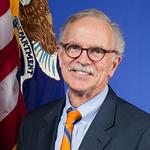

 Coming to Terms with Your Hearing Loss? How to Achieve Your Best Hearing Experience.
Coming to Terms with Your Hearing Loss? How to Achieve Your Best Hearing Experience.

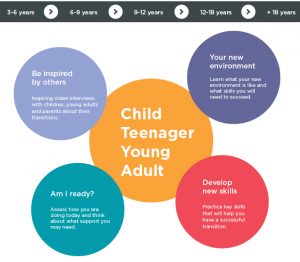 Transitions are the times of change in life that we all go through as we move from childhood into adolescence on to adulthood. They may feel challenging, especially to children and young adults who are still finding their way in life. However, transitions are also opportunities to learn, grow, and discover new things about ourselves and the world around us.
Transitions are the times of change in life that we all go through as we move from childhood into adolescence on to adulthood. They may feel challenging, especially to children and young adults who are still finding their way in life. However, transitions are also opportunities to learn, grow, and discover new things about ourselves and the world around us.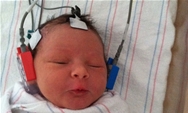
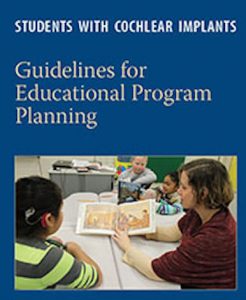
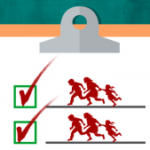
 For 20 years, Scott Smith has worked as an EMS for Rincon Valley Fire District in Arizona, as an EMT instructor for Coconino County Community College, and as a Captain and Paramedic in Flagstaff, Arizona. Scott also has a degree as an electronics engineer, developing software for court reporting and captioning industries. Scott, working with his wife, Deanna Baker, provides assistance to the many CART reporters at the annual Convention of the Hearing Loss Association of America, ensuring the audiovisuals seamlessly link to the CART and captioning throughout the convention. He also helps troubleshoot problems with the many assistive listening devices throughout the Convention site.
For 20 years, Scott Smith has worked as an EMS for Rincon Valley Fire District in Arizona, as an EMT instructor for Coconino County Community College, and as a Captain and Paramedic in Flagstaff, Arizona. Scott also has a degree as an electronics engineer, developing software for court reporting and captioning industries. Scott, working with his wife, Deanna Baker, provides assistance to the many CART reporters at the annual Convention of the Hearing Loss Association of America, ensuring the audiovisuals seamlessly link to the CART and captioning throughout the convention. He also helps troubleshoot problems with the many assistive listening devices throughout the Convention site. Lise Hamlin joined the Hearing Loss Association of America’s (HLAA) national staff as director of public policy in April 2008. Lise, who has a hearing loss herself, has worked as an advocate for people with hearing loss for over 20 years. She currently represents HLAA on federal advisory committees, industry advisory groups, and consumer coalitions. She has also taken part in developing, maintaining and presenting training programs on hearing assistive technology and on emergency preparedness. Lise receives emails and calls daily from consumers with hearing loss who experience barriers to hearing health care, employment, technology, access to public places and telecommunications access. She works directly with consumers to help overcome those barriers.
Lise Hamlin joined the Hearing Loss Association of America’s (HLAA) national staff as director of public policy in April 2008. Lise, who has a hearing loss herself, has worked as an advocate for people with hearing loss for over 20 years. She currently represents HLAA on federal advisory committees, industry advisory groups, and consumer coalitions. She has also taken part in developing, maintaining and presenting training programs on hearing assistive technology and on emergency preparedness. Lise receives emails and calls daily from consumers with hearing loss who experience barriers to hearing health care, employment, technology, access to public places and telecommunications access. She works directly with consumers to help overcome those barriers.